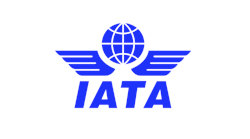WASHINGTON – On Oct. 7, a coalition of aviation trade associations sent a letter to the U.S. Federal Aviation Administration (FAA) and the European Aviation Safety Agency (EASA) addressing a major issue in the international agreement between the two bodies. The complication: documentation of aircraft parts that are subject to the jurisdiction of both the European Union and the United States.
The letter was signed by representatives of the Aeronautical Repair Station Association (ARSA), the Aerospace Industries Association, the Aircraft Electronics Association, the Aircraft Owners and Pilots' Association, Airlines for America, the Aviation Suppliers Association, the Cargo Airline Association, the General Aviation Manufacturers Association, Helicopter Association International, the International Air Transport Association, the Modification and Replacement Parts Association, the National Air Carrier Association and the National Air Transportation Association. The letter’s delivery was announced on Oct. 8 during an international regulatory panel at ARSA’s 2015 Strategic Leadership Conference (SLC) in Washington, D.C.
The coalition provided a means for smooth implementation of the most recent update to the Maintenance Annex Guidance (MAG) issued under the Bilateral Aviation Safety Agreement between the United States and the European Union. A BASA is a government-to-government agreement meant to simplify regulatory oversight across borders. Unfortunately, the Sept. 9 MAG update imposes an unrealistic compliance deadline on U.S. industry to conform its practices to those of the EU.
The MAG change creates a clear requirement for a specific FAA Form – the 8130-3 – to accompany all new parts installed by U.S. repair stations on articles that may be exported to the European Union. Unfortunately, under current FAA rules the agency must issue the document, usually through a production approval holder’s (PAH) designee.
“Even though the U.S. and EU regulatory systems are equivalent, our members’ hands are effectively tied,” said Marshall S. Filler, managing director and general counsel for ARSA. “As things currently stand, in order to serve European customers many U.S. repair stations will be legally obligated to possess parts documentation that U.S. manufacturers cannot issue.”
The FAA addressed that problem in a final rule published Oct. 1 that will allow U.S. PAHs to issue Form 8130-3 without needing an FAA designee. Unfortunately, aerospace manufacturers will be unable to implement the new privilege until the final rule’s March 29, 2016 effective date, with longer timelines required for FAA regulatory review and approval.
To allow for a smooth and orderly transition to the new MAG requirement, the industry letter requests the FAA and EASA delay its implementation date for six months after the effective date of the FAA final rule.
“The FAA has provided the remedy for the Form 8130-3 problem [with the Oct. 1 publication of its new rule],” Filler continued, “The simple, common sense solution is to give U.S. industry the time it needs to align its quality systems with the new MAG requirement. In the meantime, repair stations should not have to suffer adverse consequences when the fundamental problem lies outside their control.”
For more information about MAG Change Five, please visit ARSA.org/mag-change-5.





